
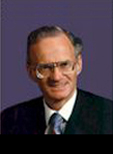 |
"Wavescan," a weekly program of Adventist World Radio, first came on the air in 1995. For most of the years since it has been produced by internationally known DXer and radio historian Dr. Adrian M. Peterson, Coordinator of International Relations for AWR. Unique to "Wavescan" are the features on radio history that are written by Adrian and based on his original research. We have reproduced many of those features here. We have also added two additional series of articles, "Reminiscing With A Radio," written by Adrian for New Zealand's "Radio Heritage" website http://www.radioheritage.net/, and "American Shortwave Panorama," which Adrian writes for the trade publication Radio World on behalf of the National Association of Shortwave Broadcasters (NASB) http://www.shortwave.org/. Thanks to Adrian Peterson, the Radio Heritage Foundation and the NASB for their permission to post this material here. On our Wavescan page you will also find a Wavescan index. And you can search the Wavescan entries by using the search box on our homepage. |
||||||||
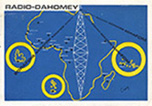 |
The QSLs of SORAFOM and OCORA - As countries of the French overseas community moved toward independence in the late 1950s and early 1960s, their broadcasting stations were assisted in various aspects of development by a French governmental organization, the Société de Radiodiffusion de la France d'Outre-Mer, or SORAFOM (renamed the Office de Coopération Radiophonique, or OCORA, in 1962). Among other services, SORAFOM/OCORA provided stations with QSL-cards that they could use in replying to listener reception reports. As a result, these stations—most of which were in Africa—became good verifiers and prime DX targets. In "The QSLs of SORAFOM and OCORA," we have assembled a collection of these cards and added a bit of history on the various stations. | ||||||||
 |
DXers and the Early Days of the Foreign Broadcast Information Service - For all its secrecy, the CIA was not bashful about offering for public sale its periodic "Broadcasting Stations of the World" reference volumes during the years 1952-1974. And the cost was just a few dollars. But the 1952 set said it was the eleventh edition. What about the first ten? We now have more information about how the agency’s Foreign Broadcast Information Service kept track of the shortwave bands in the days between its founding as part of the FCC in 1941 and the first public appearance of "BSW" 11 years later; plus some interesting historical station information from the wartime days, including the role DXers played in it all. In addition to some pre-1952 BSWs, we have posted a series of seven shortwave lists issued in 1942-43 ("Shortwave Broadcasting Stations of the World"); nearly the full run (62 issues) of the club-like publication, "Short Wave Schedule and Reception Notes" (1943-46); and a guide to listening to online FBIS recordings from the years 1941-46. | ||||||||
 |
Philco Radio Atlas - In the 1930s it was not unusual for radio manufacturers to publish booklets and the like about shortwave in order to advertise their products and explain to the public the differences between this "new" medium and what they were used to on the standard broadcast band. One of these companies was Philco, which offered a variety of such material to their customers, new and old. This included, during the years 1934-36, a series of "radio atlases." | ||||||||
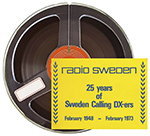 |
Arne Skoog: The Early Recordings - We are happy to present this collection of recordings that were made by various DXers and played on air at the start of most editions of Sweden Calling DXers, the weekly DX program of Radio Sweden. Arne Skoog was the SCDX DX Editor from the program’s founding in 1948 until his retirement in 1977. These recordings are mostly from 1952-54, with some from the 1940s. The Swedish DX Federation salvaged them, and, with their permission, we present them here. Read the full story inside, and listen to clips from the early Red Cross broadcasts, PCJ in 1947, DUX Radio in Tangier, and 100 others, mostly long gone from shortwave. | ||||||||
 |
The DX Recordings of Tetsuya Hirahara - One of the best memorials of shortwave stations of the past are the audio recordings of their signals. These recordings are especially valuable when made at close range. Tetsuya Hirahara has been one of Japan's foremost DXers of Latin American stations, and others, most of which are no longer on shortwave. In this section, Tetsuya favors us with many of his recordings, some of which were made on trips to the Americas. Included are some seldom-heard English announcements. Tetsuya was a prime source of Latin American DX information for many years, and we are pleased that he is now contributing to the recounting of shortwave broadcast history in this way. We hope to add more of Tetsuya's recordings in the future. | ||||||||
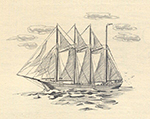 |
Setting Sail on the Seth Parker World Cruise - It was 1933 and the Depression was still on, but Phillips Lord was doing well, having found fame and fortune as the plain-talking, God-fearing, down-home character Seth Parker, who had become phenomenally popular on NBC’s Sunday-night airwaves. What better way to follow up this success than by sailing around the world, visiting exotic ports, mailing specially-designed postal covers to philatelists, and broadcasting from the ship for the folks back home? And best of all for DXers: the programs would also be heard direct from the ship by way of its shortwave transmitter, call letters KNRA. What could go wrong? | ||||||||
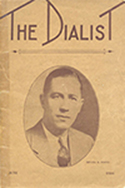 |
The Dialist - For those who remember the Newark News Radio Club, its nearly half century of service to the DX community will always be embodied in the NNRC Bulletin, which was published continuously from September 1935 to April 1982, when the club closed. The NNRC had been formed on December 8, 1927, and for its first six and a half years it consisted solely of periodic meetings at The Newark Evening News, plus various radio-related columns in the paper. Those very early days are recounted in Newark News Radio Club–The Very Early Days. What is generally overlooked is that for a brief period, from June 1934 to April 1935, before the start of the NNRC Bulletin, the club published a professionally-printed magazine called The Dialist. There were six issues in all. | ||||||||
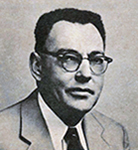 |
The Early DX of David F. Thomas - It was 1924 and Dave Thomas was 15 years old when he started listening to the radio and writing to stations. It had been only four years since the historic KDKA broadcast, just one year since the standard broadcast band had been established. The properties of shortwave had barely been discovered. Dave wrote to stations and received answers, and so began a lifetime of DXing and QSLing. Thanks to his son, Dave’s QSLs have been preserved in good order, and we are happy to be able to show some of the best of them here. | ||||||||
 |
VOA Foreign Relays--QSLs - During its long history, VOA has transmitted from many interesting places. While QSLs for VOA transmissions were not hard to obtain, usually they were pretty generic in design. But VOA has offered some QSLS specially designed for a particular event, and in other cases direct replies from the transmitter sites could be had. We have gathered together some examples of these "special" VOA QSLs, for transmissions originating from outside the continental U.S. | ||||||||
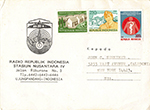 |
DXing Indonesia - Indonesia has long been one of the most productive listening and QSL targets for serious shortwave DXers. The place names were exotic--Makassar, Surabaya, Bandung, and numerous others. Most of the stations were operated by local or regional governments, but some were under private ownership. In general they served local audiences and operated with low power. And they were good QSLers. We have gathered up many QSLs from Indonesia, together with several authoritative DXing publications on Indonesia. There are only a few Indonesian stations still on shortwave, making the country now mostly a matter of DX history. | ||||||||
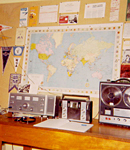 |
The DX Recordings of Colin Miller - Now VE3CMT and living in Sarnia, Ontario, Colin Miller spent most of his life in South Africa, where he learned about shortwave and started DXing in 1959. His location provided him a unique opportunity to hear at good quality stations that were real DX for those of us living far, far away. And his work at SABC gave him an inside look at the world of shortwave broadcasting. Colin often recorded his reception, and we are pleased to present here some of these recordings. We hope to offer more in the future. | ||||||||
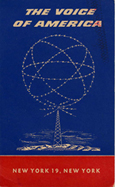 |
American States on Shortwave - Have you ever wondered just how many states of the U.S., and which ones, have transmitted on shortwave broadcast? You will find the answer in "The American States on Shortwave." It contains a state-by-state rundown of all the stations, and it does the math of "state counting." Included in the tally are the traditional shortwave broadcasters, the wartime point-to-point broadcasters, and the apex stations (below 30 MHz.) of the late 30s-early 40s, plus a few special situations (including WWV). The history of American shortwave broadcasting can be confusing. If you want to learn more about it, this is a good place to start. Note: This list was last updated on December 31, 2021 and is no longer being updated. |
||||||||
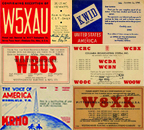 |
American States on Shortwave: QSLs, 1923-1963 - Some of the most interesting QSLs came from the early American shortwave broadcasters. As a group these QSLs are not highly stylized, in many cases using just a basic postcard approach. But they reflect the shape of early American shortwave broadcasting, which was generally a small-scale, experimental, company-owned effort. American shortwave was also the product of a long-held American wariness of direct government broadcasting, even on the international side, lest it seep into domestic broadcasting and morph into a government propaganda.effort. But the exigencies of World War II demanded a different approach. The government took over shortwave broadcasting in 1942, and no new private shortwave broadcast stations were licensed until 1962. This presentation gathers together many of the QSLs of the early stations. The QSLs that previously appeared in "The CPRV Gallery" have been included, and dozens of others, from various sources, have been added. Users are welcome to submit additional QSLs. |
||||||||
 |
Radio Postcards - Over the years, pictures of radio stations, especially broadcast band stations, have often adorned postcards. Such cards have also depicted various other radio themes. Although not QSLs, they can be interesting to the listener-collector. | ||||||||
|
|
|||||||||
 |
Active-Inactive SWBC Countries - Years ago, SWBC countries that had gone inactive were few and were easily identifiable. Many had been inactive for decades and so were never considered current DX targets. When a recently-active SW country went inactive it was an event. Today the situation is different. With so many SWBC countries off shortwave, or operating under leased-time arrangements over transmitters in other countries, it has become difficult to keep track of just how many countries are active, that is, how many offer shortwave broadcasting from transmitters located within their own boundaries. The country list of the North American Shortwave Association is the one most commonly used by North American SWLs. The NASWA list indicates by asterisk those countries that were inactive on August 9, 2011, the date when the list was last updated. In the "Active-Inactive SWBC Countries" table we show whether a country is active or inactive and we add many explanatory notes as to when the country went inactive, which stations are still on, etc. We also summarize the results and show how many countries are active and inactive on each continent, and worldwide.
Note: This list was last updated on December 31, 2021 and is no longer being updated. DXer and retired electrical engineer Lennart Weirell of Vasteras, Sweden, who has been active in the Swedish DX Federation for many years, manages the group's country list, which is based on the EDXC list. Lennart has done a comparison of active countries in 2017 vs. 2000, and you can see the results here. He does not claim absolute accuracy in his calculations, but the trend is clear enough. Thanks, Lennart. Domestic Broadcasting Survey Editor Anker Petersen has been tracking the status of tropical band broadcasting for many years. Here you can see his findings on the status of tropical band broadcasting in 2020 vs. 1973, 1985, 1997 and 2009. Thanks, Anker. |
||||||||
|
|
|||||||||
 |
Updated! Radio Envelopes - If you were QSLing when postal mail was still king, chances are you never gave much thought to the envelope once you opened it. But station envelopes can bring back some nice memories. Take a look. | ||||||||
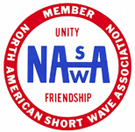 |
NASWA Pioneers - The birth of the North American Shortwave Association ("NASA" until November 1966, "NASWA" thereafter), is said to have been in September 1961. The club had 175 members by the end of 1963. It was an all-band club until it went SWBC-only in August 1966. For most months, the club bulletin contained a list of new members showing town and state, membership number, and sometimes address. A few times during 1962 and 1963 more detailed writeups about each new member were presented, and starting in March 1964 these more expansive writeups became the standard way of introducing new members. The writeups were truncated somewhat in the latter months of 1968, and in February 1969 they were dropped altogether in favor of brief "new member" lists containing usually name and location only. We have assembled both the lists and the writeups for all but a few months starting with the first membership list in May 1962 and going through the final more-detailed member writeups in January 1969. Today's senior DXers will find many familiar names here, including, in some cases, their own.
|
||||||||
|
|
|||||||||
 |
Media Network Vintage Vault: An Index - Since 2010, Jonathan Marks has been posting to his Media Network Vintage Vault website the recordings of the Media Network programs that were broadcast over Radio Netherlands during the years 1981 to 2000. From the standpoint of both content and production value, Media Network was the best program on the air catering to shortwave enthusiasts. It was more than a "DX program," and it contained a huge amount of information about stations, DXing, and media activities in general. The recordings are a unique resource, and this index makes it easier to find information on particular topics. Corrections to the index are welcome, and we hope to keep it up to date as Jonathan posts additional programs. Many thanks to him for preserving this treasure trove of media information. Note: This list was last updated on August 31, 2022 and is no longer being updated. |
||||||||
|
|
|||||||||
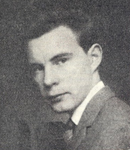 |
An Index to the Station Recordings of Richard Ginbey - Here is another tool for getting the most out of the Vintage Vault: an index to the recordings of South African DXer Richard Ginbey, which were often heard on Media Network, mainly during the 1980s. Most were recordings of African stations. Richard was a broadcast professional, and his knowledge of radio's history on the continent and his proximity to the stations produced some very interesting recordings. From the mid-1960s to the early 1970s Richard also hosted a DX program, "Radio Safari," first over Radio Portugal, then over Radio RSA. In the 1960s he contributed a number of articles to How to Listen to the World, and in the mid-1970s he edited the WRTH World Radio Bulletin newsletter. Richard died in 1991; Jonathan Marks announced his passing. | ||||||||
|
|
|||||||||
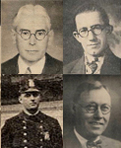 |
"Who's Who in the NNRC" - Founded in 1927, the Newark News Radio Club (originally called the Newark News DX Club) was the first major listener club in the United States. One thing that always made the NNRC unique was its focus on members. Station news was important, but so were the doings of NNRCers. From 1936 to 1945 (though with decreasing frequency during the war years), the club bulletin contained a column called "Who's Who in the NNRC." As the name suggests, it consisted of biographical writeups about the members. "Who's Who" was written by Harry E. Varrelman of Brooklyn, New York, who was 22 years old when the column first appeared. We are reproducing the full run of "Who's Who" to learn more about the background and interests of the NNRC members of the day. | ||||||||
|
|
|||||||||
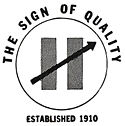 |
The Hammarlund Short-Wave Manual was a pamphlet-style publication of Hammarlund Manufacturing Co., one of the great receiver manufacturers of the late 1920s to the 1960s. The earliest edition we have seen is from 1929, the last is an undated edition that was probably issued in 1940. For many years Hammarlund mainly sold parts rather than complete receivers, so the manuals show various home-built receiver designs, and specify the Hammarlund parts to be used, together with the parts of other companies. There are also introductions to shortwave. | ||||||||
|
|
|||||||||
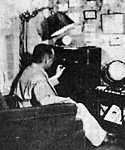 |
SWLing in World War II - World War II began in Europe on September 1, 1939 (the U.S. did not enter the European war until Pearl Harbor). The end of the European conflict was marked by "V-E Day" on May 8,1945. Pearl Harbor, December 7, 1941, is generally taken to be the start of the war in Asia and the Pacific, although Japan had been fighting in China since the 1930s. "V-J Day," September 2, 1945, marked the end of the Pacific war. Shortwave listening during World War II was different from the pre-war days. The Spanish Civil War (1936-39) had given birth to the increased use of radio, including shortwave, for propaganda purposes, but World War II brought that part of the international medium to a new level. Shortwave broadcasting was also put to broad use for the support of the troops. Shortwave reflected the changing geopolitics of the war; and clandestine broadcasting became a new and important branch of the shortwave art. Shortwave was important enough for governments to set up monitoring units to follow enemy broadcasts in hopes of better understanding the enemy and its likely geopolitical moves. Moreover, the war years established the general contours of shortwave broadcasting for decades to come. But the demands of the war meant less shortwave listening, the result being an abbreviated record of what was being heard. To illuminate that record as much as possible, "SWLing in World War II" presents the wartime shortwave loggings columns of some of the American club bulletins. | ||||||||
|
|
|||||||||
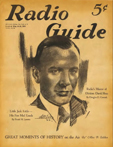 |
Charles A. Morrison and Radio Guide & Movie-Radio Guide - Charles A. Morrison is well known for his leadership of the International DXers Alliance, a club which operated from 1932 to 1943. Less well known is that from 1935 to 1943 (the year the magazine closed) he also had a shortwave column in a popular newstand radio magazine titled Radio Guide (renamed Movie and Radio Guide in February 1940, Movie-Radio Guide eight months later). Radio Guide had offered some limited DX coverage, both shortwave and broadcast band, at least as far back as 1932 (and perhaps even 1931, its founding year), but Morrison focused on shortwave. Most issues of the magazine are posted online at AmericanRadioHistory.com or at Old Time Radio Researchers Group. In this new section we have extracted the shortwave and other DX columns from those issues and assembled them into annual compilations for the years 1932 to 1943. Thanks to David Gleason of AmericanRadioHistory.com and Jim Beshires of the Old Time Radio Researchers Group for permission to use their magazines in this way. | ||||||||
|
|
|||||||||
 |
DX Newsletters - In the pre-internet days, the monthly club bulletin was the principal means for disseminating DX information throughout the listening community. DX newsletters were a second vehicle. Shorter in length, and often issued more often than monthly, they served up DX information more promptly, and usually to a smaller audience. Here is a sample of some of the DX newsletters of days gone by. | ||||||||
|
|
|||||||||
 |
The World Radio Handbook - a comprehensive listing of issues published, including summer supplements. | ||||||||
|
|
|||||||||
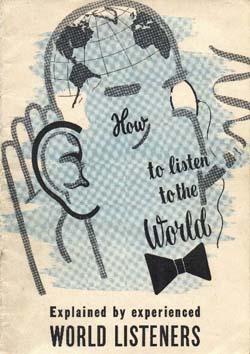 |
How To Listen To The World - a comprehensive listing of issues published. | ||||||||
|
|
|||||||||
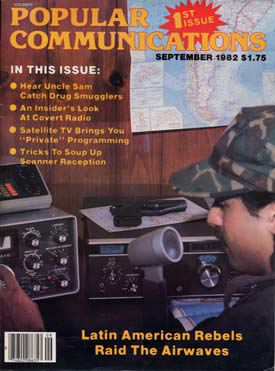 |
Popular Communications Index - A complete and up-to-date Index to the historical material that has appeared over the years in Popular Communications magazine, from the first issue in September 1982 through its last, in December 2013, and then through the March-April issue of PopComm's successor publication, CQ Plus (a few missing issues excepted). | ||||||||
|
|
|||||||||
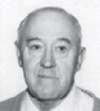 |
"Looking Back" - Tom Williamson of Hamilton, Ontario produced a regular column for the Ontario DX Association's monthly bulletin, Listening In, wherein he looked at various aspects of shortwave history. (Tom died in June 2013.) | ||||||||
|
|
|||||||||
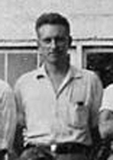 |
"The Pioneer Days-NNRC" - With roots going back to 1927, the Newark News Radio Club was the country's oldest all wave listener's club. From June 1966 until the club's final bulletin in 1982, the NNRC bulletin contained a column called "The Pioneer Days." It was written by longtime member Carroll H. Weyrich of Baltimore, and it reprised early issues of the club bulletin going back as far as 1935. | ||||||||
|
|
|||||||||
 |
"The Scott News" - This newsletter was published by the E. H. Scott Radio Laboratories to promote its line of high-end radio receivers. www.ontheshortwaves.com recently received from Michael Csontos, Lima, NY, a member of the Antique Wireless Association, some scans of copies of "The Scott News" which were donated to the AWA museum in 2006 in the name of Frank Cash of Boston, MA. We are posting those copies here (asterisked), together with some other copies that we have posted before. We will add any others that become available. It appears that "The Scott News" was published from the late 1920s to the early 1940s. Thanks, Mike, and thanks to the AWA Museum for their permission to post this material. | ||||||||
|
|
|||||||||
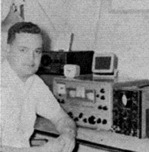 |
Clandestine Corner - NASWA became an "all shortwave broadcast" club in August 1966. For approximately two years thereafter, the "Shortwave Broadcast Center" column, edited by Don Jensen, included a "Clandestine Corner" subsection featuring material from Jensen's "History of Clandestine Radio Operations." These articles represent some of the earliest writing on clandestine topics from within the DX community. Thanks to Don and NASWA for permission to post them here. There will be 21 articles in all. | ||||||||
|
|
|||||||||
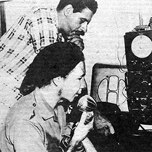 |
Radio and Fidel Castro - One of the earliest major post-World War II examples of clandestine broadcasting occurred in connection with Fidel Castro's seizure of power in Cuba. | ||||||||
|
|
|||||||||
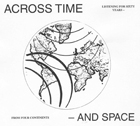 |
Across Time--And Space - Although radio often plays an important part in the lives of DXers, we seldom have the opportunity to learn their personal stories in depth. An exception is the late Tom Williamson of Hamilton, Ontario. In "Across Time--And Space: Listening for Sixty Years From Four Continents," Tom tells how radio fit into his life, first during his years in England, and then (from 1966) in Canada. Tom began listening in 1935 when, "aroused from my slumber by an excited father, I tumbled downstairs with my mother to 'hear America' on the family radio." He passed away in 2013. The 99 page book, written in 1996 and published by the Ontario DX Association, is available for download. | ||||||||